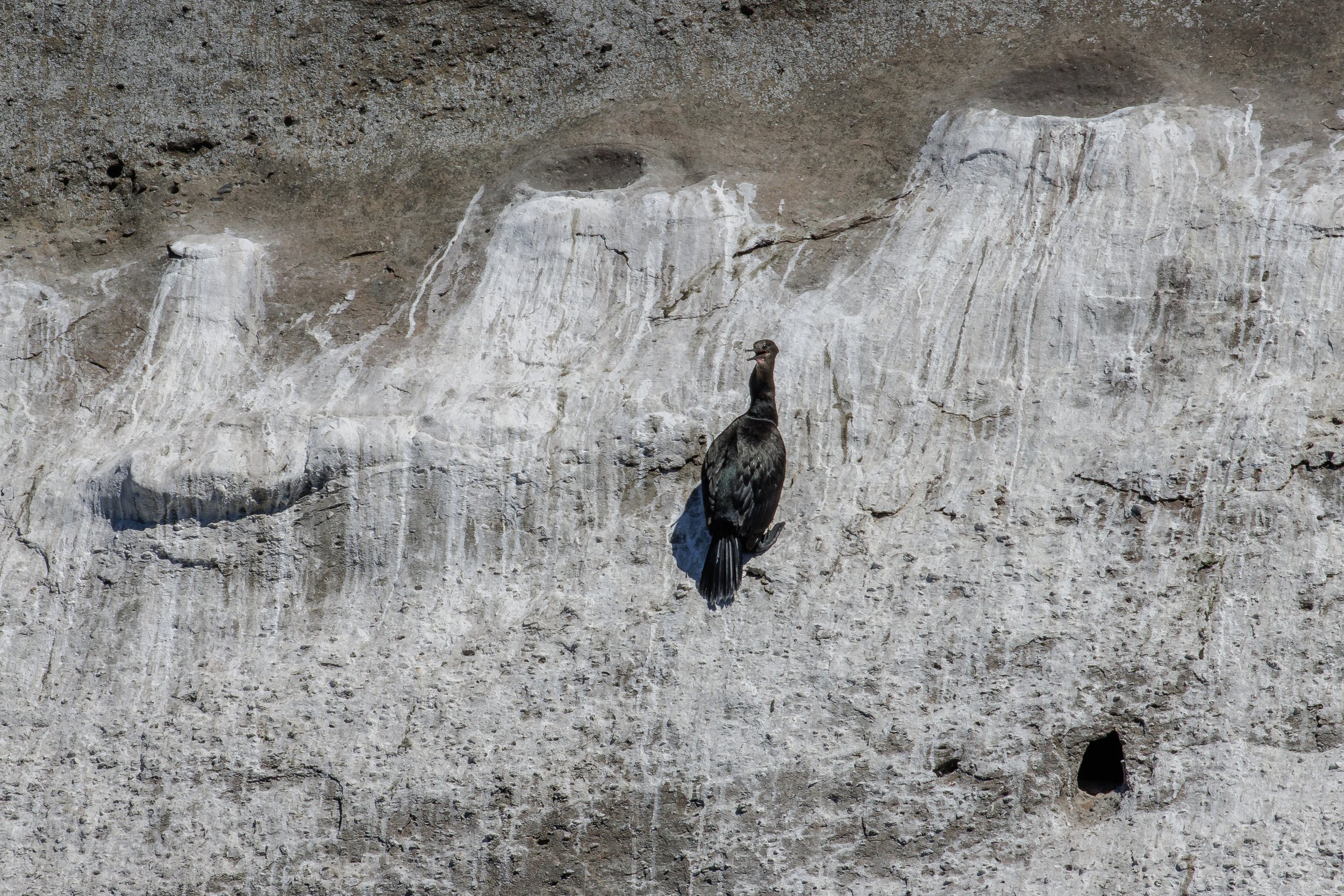August 14, 2023 - Cruising the coast
During our trip today, we cruised through the Southern Gulf Islands. When most people think of Vancouver Island, they picture lush forests, towering mountains, and a pristine coastline - we got to take in all these sights and more as we adventured! We stopped to see our sleepy little Harbour seals and grumpy Sea lions as we continued our search for whales. Today, we also got a brief view of what it is like UNDER the water as well when we cruised by some loose plant matter floating along in the currents.
There's another kind of forest hidden beneath the waves that sometimes is forgotten about – the enchanting kelp forests. These underwater ecosystems, composed primarily of Giant kelp (Macrocystis pyrifera), are the lifeblood of the coastal region. They help the plants and animals thrive in many different ways, including:
Biodiversity Hotspots: Kelp forests are biodiversity hotspots. They serve as critical habitats for a wide range of marine species, including fish, invertebrates, and marine mammals such as Harbour seals and Sea lions. Many commercially and recreationally important fish species, such as Pacific salmon, lingcod, and rockfish, rely on kelp forests for shelter and food.
Nursery Grounds: Kelp forests function as nursery grounds for countless species. The dense fronds of kelp provide a safe haven for juvenile fish, crabs, and other marine creatures, shielding them from predators and strong currents. This nurturing environment is essential for the survival of many species that eventually make their way into our fishing and tourism industries.
Carbon Sequestration and Climate Mitigation: Kelp forests are vital for marine life and play a role in combating climate change. These underwater jungles are remarkable carbon sequesters, absorbing carbon dioxide from the atmosphere and locking it away in their fast-growing fronds. Kelp can capture up to 20 times more carbon per unit area than land-based forests, making them an essential ally in our fight against global warming.
Erosion Control: The extensive root-like structures of kelp, known as holdfasts, anchor themselves to the ocean floor, preventing erosion of coastal shorelines. This natural protection helps safeguard the delicate balance of our coastal ecosystems and the communities that rely on them.
While we rarely view Giant kelp on our tours, we often are able to spot another essential kind of kelp known as Bull kelp (Nereocystis luetkeana) - as seen in our photos below.
Recently we have seen a decline in the kelp forests due to the sea urchins’ rise in populations which will eat the roots of the kelp and anchor it to the rocks below. This huge increase in the sea urchin population is due to the extirpation (locally extinct) of the urchin’s main predator - the Sea otter (Enhydra lutris). Sea otters were hunted very extensively during the fur trade era as their dense fur was ideal for hats and gloves.
In general, Sea otters are still quite rare on the Eastern Vancouver Island coastline. There have been occasional sightings of Sea otters on the Northeastern tip of Vancouver Island, but most current sightings come from the West coast of the island. Victoria has one famous Sea otter named Ollie - Ollie is so well known he has his own dedicated Facebook page for his fans! It is believed that the current Sea otter populations will continue to expand. Hopefully, one day we will be able to view Sea otters in our area regularly again, and they’ll be able to get the rampant sea urchin population under control
Unfortunately, today our whales were elusive and we were unable to locate them for our tour. When you are watching wildlife that is free of trackers and tags, there’s always a chance that this can happen which is why all guests on board are given vouchers to use again at their leisure, for another chance to come out and visit our whales.
Today’s photos were taken by Marine Naturalists Val Watson and Ella Hillbrecht.
A Steller Sea Lion gazing at the ocean. Photo by Ella Hillbrecht.
A colony of Steller Sea Lions sleeping on the shore. Photo by Ella Hillbrecht.
Harbour Seals wiggling about. Photo by Ella Hillbrecht.
A Bald Eagle getting hit by a wave! Photo by Ella Hillbrecht.
A ruffled Bald Eagle adult standing on the rocks! Photo by Ella Hillbrecht.
Two adorable Harbour Seals were surprised by our presence! Photo by Ella Hillbrecht.
A forest of bull kelp! Photo by Ella Hillbrecht.
A Bald Eagle. Photo by Ella Hillbrecht.
Mount Baker. Photo by Ella Hillbrecht.
Cormorant on the Bluffs. Photo by Ella Hillbrecht.
Photo by Ella Hillbrecht.
Harbour Seals on the rocks. Photo by Ella Hillbrecht.
Photo by Ella Hillbrecht.
A whole lot of Harbour Seals and Gulls. Photo by Val Watson.
Photo by Val Watson.
Someone has ruffled their feathers! Photo by Val Watson.
















